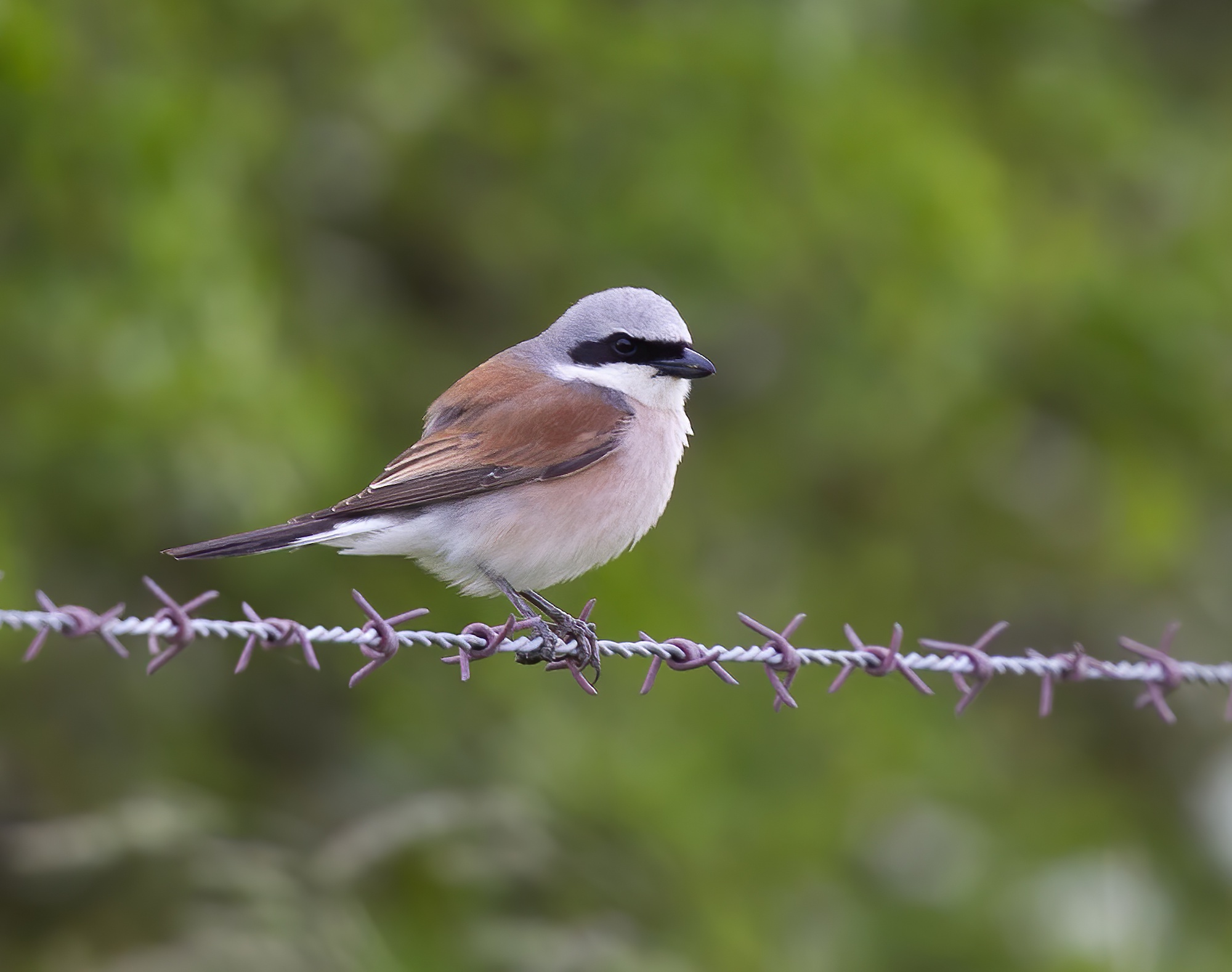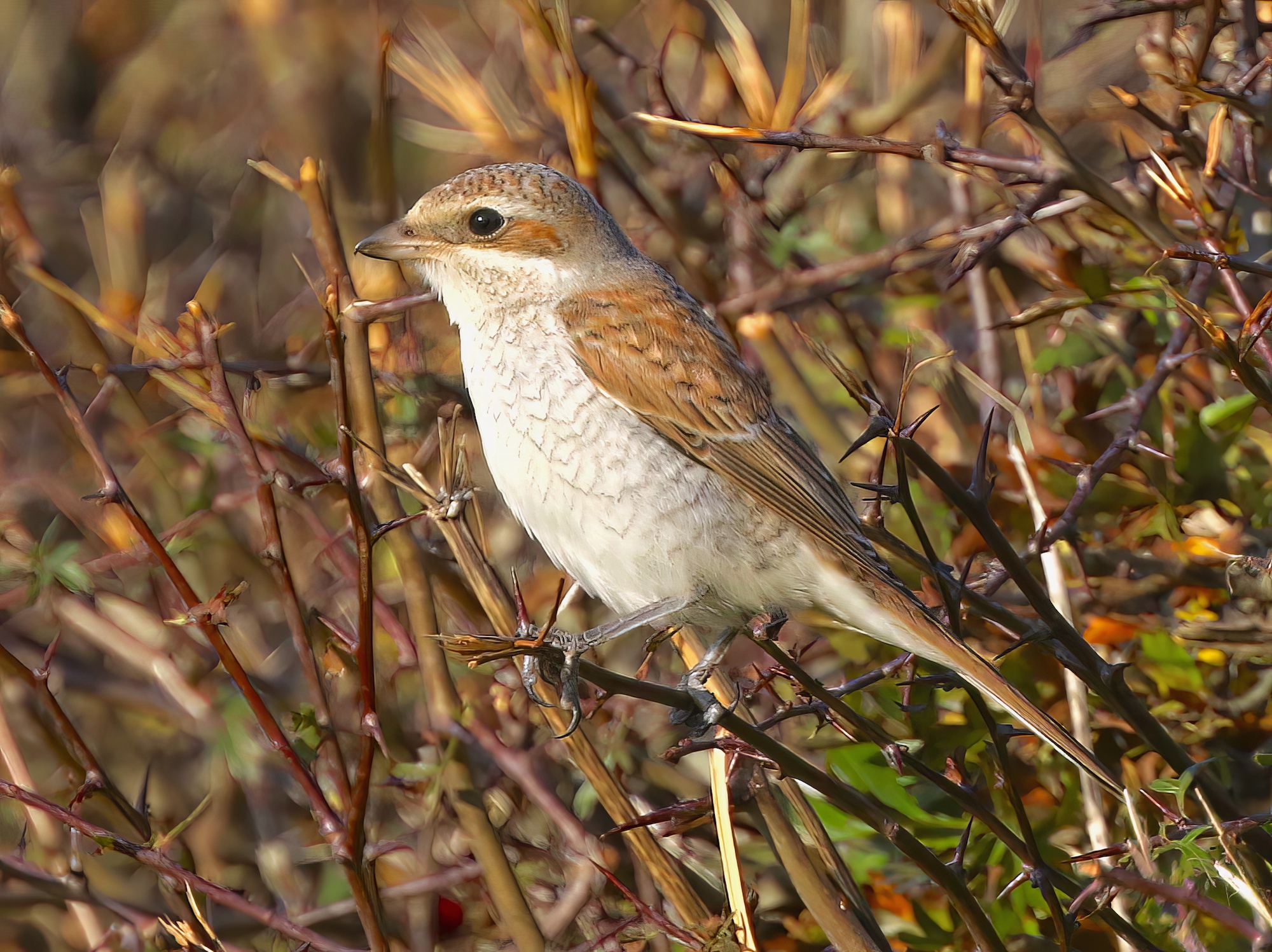Red-backed Shrike Lanius collurio


During the late 19th century Haigh recorded only two birds in almost 50 years of regular observation on the north-east coast. Migrants began to appear fairly regularly from the 1950s onwards, often being trapped at Gibraltar Point. A steady increase in records thereafter culminated in a sharp peak in 1977 when more than 40 were recorded in autumn alone. Up to four were at Gibraltar Point in late August and a staggering nine at Donna Nook in the same period. Since 1977 the pattern has been one of decline. During 1979-1995 there was an average number of 7-8 per year falling to 3-4 per year during 1996-2019. The earliest record was of a female at Saltfleetby-Theddlethorpe Dunes NNR on May 5th, 1985 and the latest a juvenile at Seaview Farm, Saltfleetby-Theddlethorpe NNR October 29th-31st 2019. Adults in spring are scarcer than juveniles in autumn.
Lorand and Atkin (1989) reported that there are few confirmed instances of breeding in the past and it was probably always a rare and sporadic breeder. Two pairs bred near Alford in the peak year of 1977 and four young fledged. Another pair bred at Bradley Woods near Grimsby in 1978. There have been no further records of proven breeding since.
(Account as per new Birds of Lincolnshire (2021), included October 2022)

